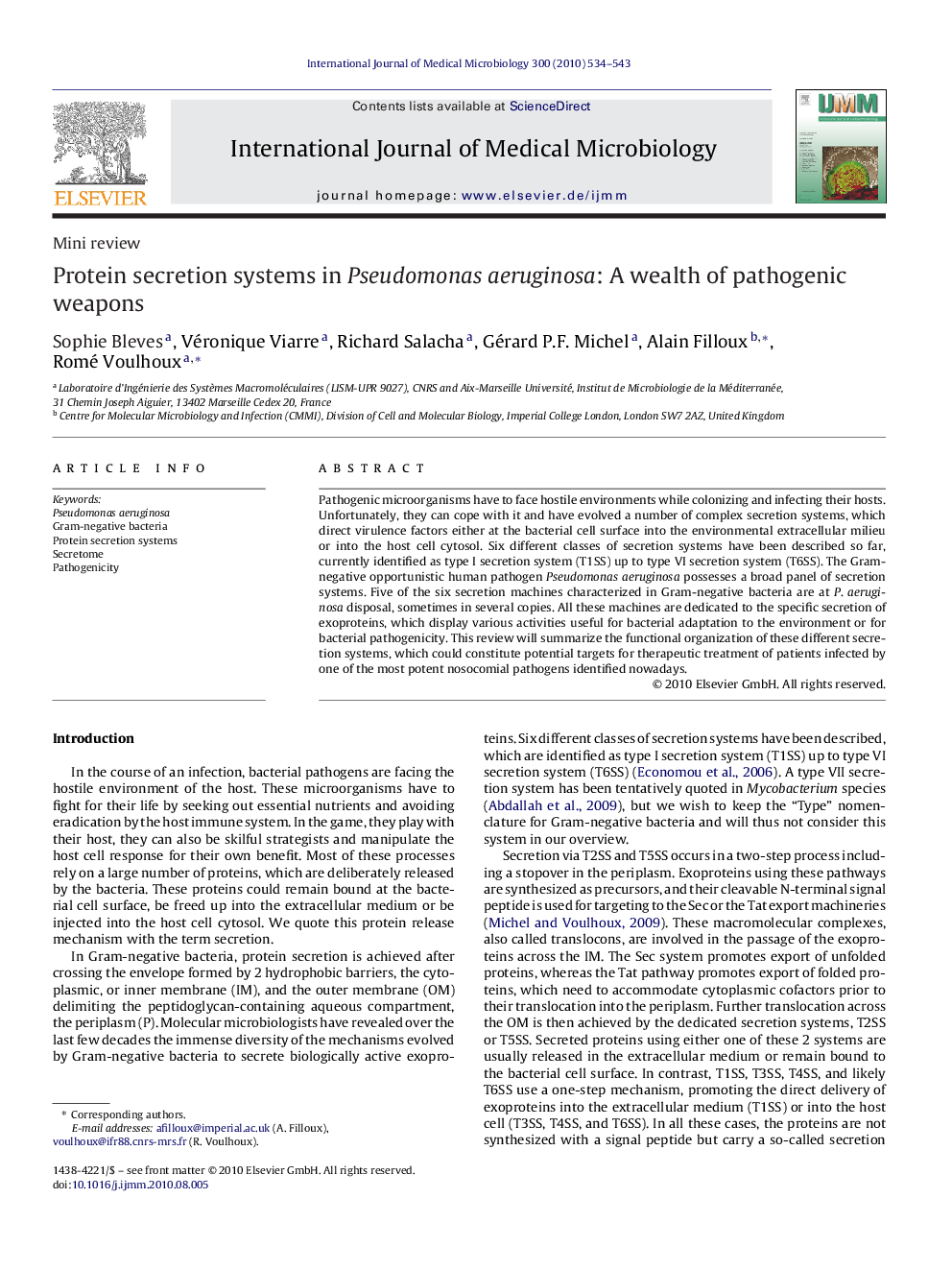| Article ID | Journal | Published Year | Pages | File Type |
|---|---|---|---|---|
| 2054867 | International Journal of Medical Microbiology | 2010 | 10 Pages |
Pathogenic microorganisms have to face hostile environments while colonizing and infecting their hosts. Unfortunately, they can cope with it and have evolved a number of complex secretion systems, which direct virulence factors either at the bacterial cell surface into the environmental extracellular milieu or into the host cell cytosol. Six different classes of secretion systems have been described so far, currently identified as type I secretion system (T1SS) up to type VI secretion system (T6SS). The Gram-negative opportunistic human pathogen Pseudomonas aeruginosa possesses a broad panel of secretion systems. Five of the six secretion machines characterized in Gram-negative bacteria are at P. aeruginosa disposal, sometimes in several copies. All these machines are dedicated to the specific secretion of exoproteins, which display various activities useful for bacterial adaptation to the environment or for bacterial pathogenicity. This review will summarize the functional organization of these different secretion systems, which could constitute potential targets for therapeutic treatment of patients infected by one of the most potent nosocomial pathogens identified nowadays.
